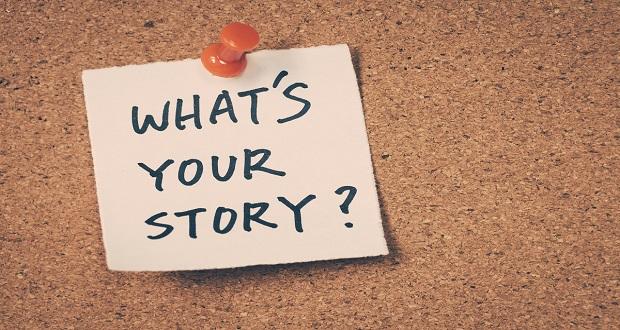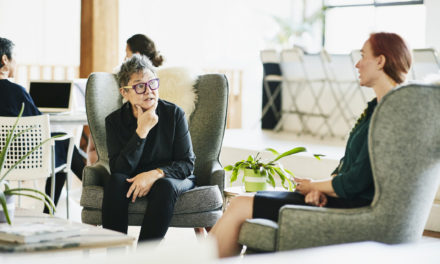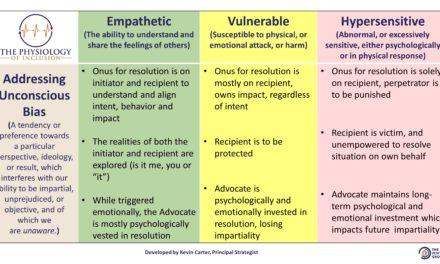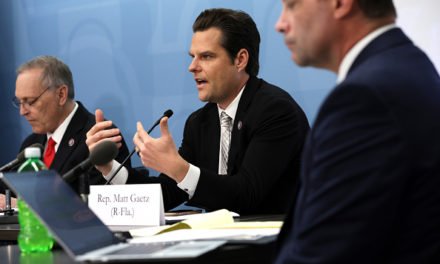Earlier this month, I had the opportunity to attend the Out & Equal Workplace Summit for the first time. Held annually, this year’s global conference was in Philadelphia, attracting over 4,000 professionals from over 40 countries and multiple industries around the world. The three-day professional summit is known for its variety of educational workshops, networking mixers, panels, roundtables, and special receptions, all focusing on advancing LGBTQ equality and inclusion in the global workplace.
As I boarded my train on a sunny October afternoon in Washington, D.C., I couldn’t help but be both excited and anxious about my trip. As a Black woman, I am often in the purported “minority” – I am very used to being, for lack of better words, the “only one”. But, during the Summit, I would also have the opportunity to explore a less visible dimension of my identity – my choice to be an Ally, or an advocate, of the LGBT community.
Although I have found myself within the diversity & inclusion space for the past few years, I am a relatively new diversity and inclusion practitioner. I am also a relatively new “Ally” – I did not formally acknowledge this role until I joined my company’s LGBTQ employee resource group and began learning more about being an ally and the ally spectrum. As a straight, cis-gendered woman, I also wondered if I would be in the minority during the Summit itself, and how that might play out in my interactions with others.
But most of all, I was excited to learn, and I was especially enthusiastic to find that Out & Equal had taken the time to specify different learning tracks for all participants – from those who were attending Out & Equal for the first time, like myself, to employee resource group leaders and diversity and human resource professionals, to a track for Allies and participants looking to learn more about intersectionality. With over 90 workshops and plenary sessions, there was ample opportunity to explore something new each day. Like most business trips, I expected to take back new ideas and business contacts to my organization. What I didn’t expect, however, was to be challenged on a personal level about my own experience as an Ally.
My exposure to the LGBTQ community came early on during my childhood. I had close family members and friends who were LGBTQ, and although I was raised in a somewhat conservative Christian home, I was always taught by my parents to love and treat everyone equally. As I got older, it was second nature to continue this behavior. So, I did find myself speaking up and out in college, at work, with friends, family, and even with individuals I dated when I felt that that their words or actions were hurtful or displayed a lack of empathy and understanding. Still, for me, there was always the fear of not knowing enough about this community to truly be an Ally – and I always wondered if there was more that I could be doing.
Enter the 2017 Out & Equal Workplace Summit.
The week I spent in Philadelphia challenged me to be okay with asking questions. It challenged me to be unsatisfied with the status quo. It challenged me to be open to learning and hearing from a multitude of intersectional perspectives. Most of all, it challenged me to be bold.
There were two moments that particularly struck me during the Summit. The first occurred during the second day, when the Summit hosted a “Power Lunch”, a unique opportunity for Summit attendees to hear from prominent LGBT and Ally keynote speakers.
Out & Equal Workplace Advocates’ CEO and Founder, Selisse Berry, gripped the podium as she peered over her glasses at the sizeable audience, the rainbow-colored stage lights washing over her tailored pink jacket and resting in iridescent pools on the stage. She paused, lifting her hands in the air, before she spoke. “No one should ever have to choose between a career they love and the person they love.”
The audience roared.
Although Berry uttered a simple statement, there was an overwhelming response. Up until that point, I never had to consciously think about being straight or cisgender, particularly in the context of the workplace. I am a relatively private person, but there have been moments where I’ve shared a date gone wrong or reminisced over a high school sweetheart with colleagues. When I was in a relationship, I would mention weekend plans or share a photo of a fun event with my significant other. But to choose between love and a career? As I thought about Berry’s words, I thought about the times I hadn’t had to choose – and perhaps, times where I had forgotten that not everyone had the same privilege that I did.
When we fail to recognize our own privilege (either consciously or unconsciously), we also may struggle to acknowledge the systems and practices in place that are barriers to others. We cannot have empathy for that which we do not see.
Later that day, I attended a workshop on leveraging the TEDTalk model and storytelling to increase engagement in diversity and inclusion initiatives. During the workshop, we heard “OutTalks” from a gay executive, a transgender woman, and a cisgender Ally – all from a top technology firm. Each shared their experiences with coming out in the workplace and standing up for equality both within and outside of that sphere, in moving, engaging speeches.
It was during this workshop that I was first introduced to the concept of “coming out as an Ally”. Coming out at work as an LGBT employee can be very difficult for many reasons – a 2014 study from the Human Rights Campaign found that 53% of LGBT workers cover who they are in the workplace. But what about coming out as an Ally?
“We’re all hiding something,” one speaker remarked. “Let’s find the courage to open up.”
It occurred to me during this session that I needed to do more than reveal myself as an Ally to my close friends and family, those who already know how I feel about diversity, equity, equality, and inclusion. I also have to be bold enough to speak about being an Ally in circles where my comments may be deemed less welcome – in those places where an Ally is most needed. During the session, I remember thinking, if they could all find the courage to share their story, then so can I.
As a diversity and inclusion practitioner, I have often heard comments such as, “I don’t talk about my sexual orientation at work” or “We shouldn’t talk about that at work”, in reference to gender identity, gender expression, and sexual orientation. After Out & Equal, my response to these statements is that we, indeed, do talk about these things (all the time!) and that we should. Anytime that I place a photo on my desk of my family, or talk about my weekend plans, or take my significant other to a holiday party, I am making a statement, whether intended or unintended, on these dynamics. There are individuals in the workplace who do not have the privilege of what most of us may not even think about as privileges at all. And in an environment where sexual orientation, gender identity, and gender expression are not always protected, we have a responsibility as Allies to advocate for others.
There are ways to advance inclusion, and move from being an ally, to advocate, to champion, in everyday life. And so, today, I choose to be bold – to speak out more when I might have previously ignored a comment, to ask questions when I might have been too self-conscious to ask, to talk more openly about being an Ally, and to find the courage to tell my story in the hopes that one day, we’ll have more Ally stories to share.



















